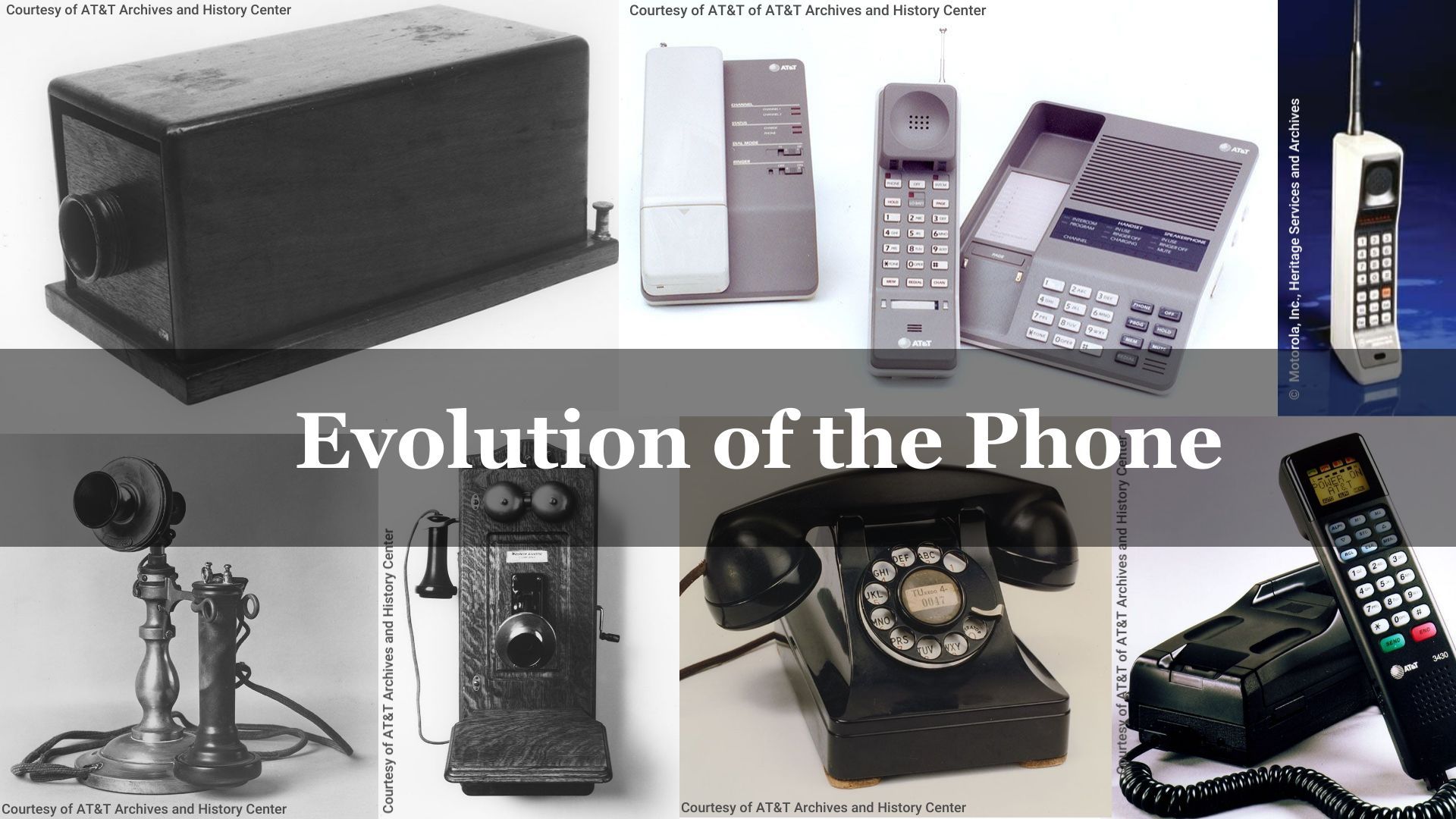
Is the telephone changing electronic switching and networking

The evolution of communication technology has drastically transformed the way we connect, with the **telephone** serving as a cornerstone for this change. As the telecommunications landscape evolves, we must consider whether the **telephone** itself is **changing electronic switching and networking**. With the rise of electronic switching systems and the integration of digital technologies, the traditional telephone landscape is experiencing unprecedented shifts.
This article delves into the intricate relationship between the **telephone** and **electronic switching technologies**. By exploring historical developments, current trends, and future directions, we aim to understand how the **automatic telephone system** acts as a catalyst for innovation in switching and networking systems. This inquiry will take us through the evolution of telephone switching systems and their functionality in the modern telecommunications environment.
- Overview of Electronic Switching Technologies
- Historical Evolution of Telephone Switching Systems
- Key Developments in Electronic Switching: AT&T ESS Series
- The Impact of Increased Telephone Traffic on Network Design
- From Hierarchical Structures to Modern Class Office Systems
- The Emergence of Packet-Switching Technologies
- The Influence of VoIP and VoATM on Telecommunications
- Future Trends in Telephone Networking and Electronic Switching
- Conclusion: The Ongoing Transformation of Communication Systems
Overview of Electronic Switching Technologies
Electronic switching technologies have revolutionized the way telecommunication systems function. Unlike **mechanical switches** that required human intervention, electronic switches automate the process of connecting calls, enhancing efficiency and reliability. The use of digital technology in **automatic telephone systems** allows for better management of telephone traffic and improved service delivery.
In essence, **electronic switching** encompasses various methods and technologies, including **time-division switching** and **packet-switching technologies**, which have increasingly been adopted to meet rising demand. These technologies facilitate the multiplexing of multiple calls and data traffic over shared physical links, enabling more effective utilization of network resources.
Historical Evolution of Telephone Switching Systems
The journey of telephone switching systems began with simple **manual exchanges**, where operators connected calls through physical plugs and sockets. This method was both labor-intensive and prone to errors. As the demand for better connectivity grew, technologies evolved into automated systems. Early **automatic telephone systems** utilized electromechanical switches, which allowed for a more efficient way to manage incoming calls.
The Transition from Space-Division to Time-Division Switching
Space-division switching was the predominant method used in early telephone exchanges. It is based on dedicated circuits for each call, providing a continuous path through metallic connections. However, this approach has inherent limitations, particularly in terms of capacity and efficiency. As the **telephone network** continued to expand, notably in urban areas, space-division systems could not keep up with the demand.
Consequently, the shift towards **time-division switching** began. By digitizing voice signals and partitioning them into time slots, multiple calls could share the same channel, enhancing the network's capacity. This transition marked a significant development in telecommunications, leading to the emergence of digital exchanges that optimized both performance and resource utilization.
Key Developments in Electronic Switching: AT&T ESS Series
The launch of the **AT&T No. 1 ESS** in 1965 was a game changer in the realm of **automatic telephone systems**. It represented the first large-scale deployment of a fully electronic switching system, integrating **ferreed switches** with innovative memory devices. With the capability to process calls more efficiently, it laid the groundwork for further advancements.
Following this, the **AT&T No. 4 ESS**, introduced in 1976, marked the first implementation of **time-division switching** in the United States. This system extended the capacity to manage tens of thousands of connections concurrently. The subsequent **No. 5 ESS** further improved these capabilities, supporting up to **100,000 lines**, demonstrating the pervasive influence of electronic switching technologies on the telecommunications infrastructure.
The Impact of Increased Telephone Traffic on Network Design
As the volume of telephone calls rose significantly in the latter half of the 20th century, network design evolved to accommodate this increased load. Traditional hierarchical architectures, which organized network nodes into local, tandem, and toll offices, were becoming increasingly challenged by the substantial growth in user demand. This prompted a re-evaluation of the structural framework governing telephone networks.
In response, the industry transitioned from a rigid hierarchical model to a more dynamic architecture. The introduction of **class 5 offices** provided local access while **class 4 offices** handled long-distance traffic. This two-level system of office classification allowed telecommunications companies to manage their infrastructure more effectively, thus ensuring a more streamlined connection process for users.
From Hierarchical Structures to Modern Class Office Systems
The transformation from hierarchical structures to modern **class office systems** has been driven by several factors, including increased demand for efficient communication and advancements in technology. Class offices facilitated a more versatile approach to managing telephone traffic, helping to eliminate bottlenecks in the system. This development significantly enhanced the ability of telecom operators to provide high-quality service to subscribers.
Modern **class office systems** also provide room for innovation, encouraging the implementation of advanced services. For example, integrating features such as call routing, load balancing, and failover mechanisms into class offices ensures that users experience minimal interruption in service, even during peak hours.
The Emergence of Packet-Switching Technologies
In the 1990s, the telecommunications landscape witnessed the rise of **packet-switching technologies**, which represent a pivotal change in how voice and data communications are processed. Unlike traditional circuit-switched networks, which rely on continuous paths for communication, packet switching enables data to be sent over a network in small packets. This method proves to be highly efficient, as it optimizes bandwidth and reduces latency.
Technologies such as **Voice over Internet Protocol (VoIP)** and **Voice over ATM (VoATM)** have further blurred the distinctions between various types of services, allowing voice traffic to be carried over data networks. This convergence signifies a major shift in electronic switching and networking, laying the groundwork for the integration of further digital solutions in the telecommunications realm.
The Influence of VoIP and VoATM on Telecommunications
The introduction of **VoIP** and **VoATM** has catalyzed an ongoing transformation in telecommunications. These technologies utilize packet-switching methods to transmit voice signals, taking advantage of existing internet infrastructure to lower costs and increase accessibility. As more users transition to internet-based communication, traditional telecom models are being challenged to adapt.
VoIP services have gained tremendous popularity due to their cost-effectiveness and ability to deliver enhanced features such as video conferencing and instant messaging. As a result, traditional **automatic telephone systems** must evolve to remain competitive, leading to increased investment in updated infrastructure that can support these new communication paradigms.
Future Trends in Telephone Networking and Electronic Switching
As we look ahead, several trends will likely shape the future of telephone networking and **electronic switching**. The growing demand for high-speed internet and mobile connectivity will continue to influence the development of advanced systems capable of handling diverse traffic types. Innovations such as software-defined networking (SDN) and network function virtualization (NFV) are emerging as solutions to enhance flexibility and improve network management.
Furthermore, the ongoing expansion of the **Internet of Things (IoT)** will necessitate more robust electronic switching architectures to accommodate the increasing number of connected devices. The seamless integration of voice, video, and data applications will ensure that future telecommunications systems remain efficient, responsive, and reliable.
Conclusion: The Ongoing Transformation of Communication Systems
In conclusion, the **telephone** has been a driving force behind the evolution of **electronic switching** and networking technologies. With the advent of electronic systems, such as the **automatic telephone system**, telecommunication infrastructure has transformed dramatically in complexity and capability. From the initial mechanical exchanges to modern digital solutions, we have witnessed a continually evolving landscape that meets the needs of a rapidly changing world.
As we navigate the future of communication, it is imperative to remain attentive to how innovations in the telecommunications industry will shape our connections. The ongoing transformation underscores the need for adaptability, ensuring that the **telephone** and its associated technologies continue to thrive in an increasingly digital ecosystem.
Did you find this article helpful? Is the telephone changing electronic switching and networking See more here General.
Leave a Reply





Related posts